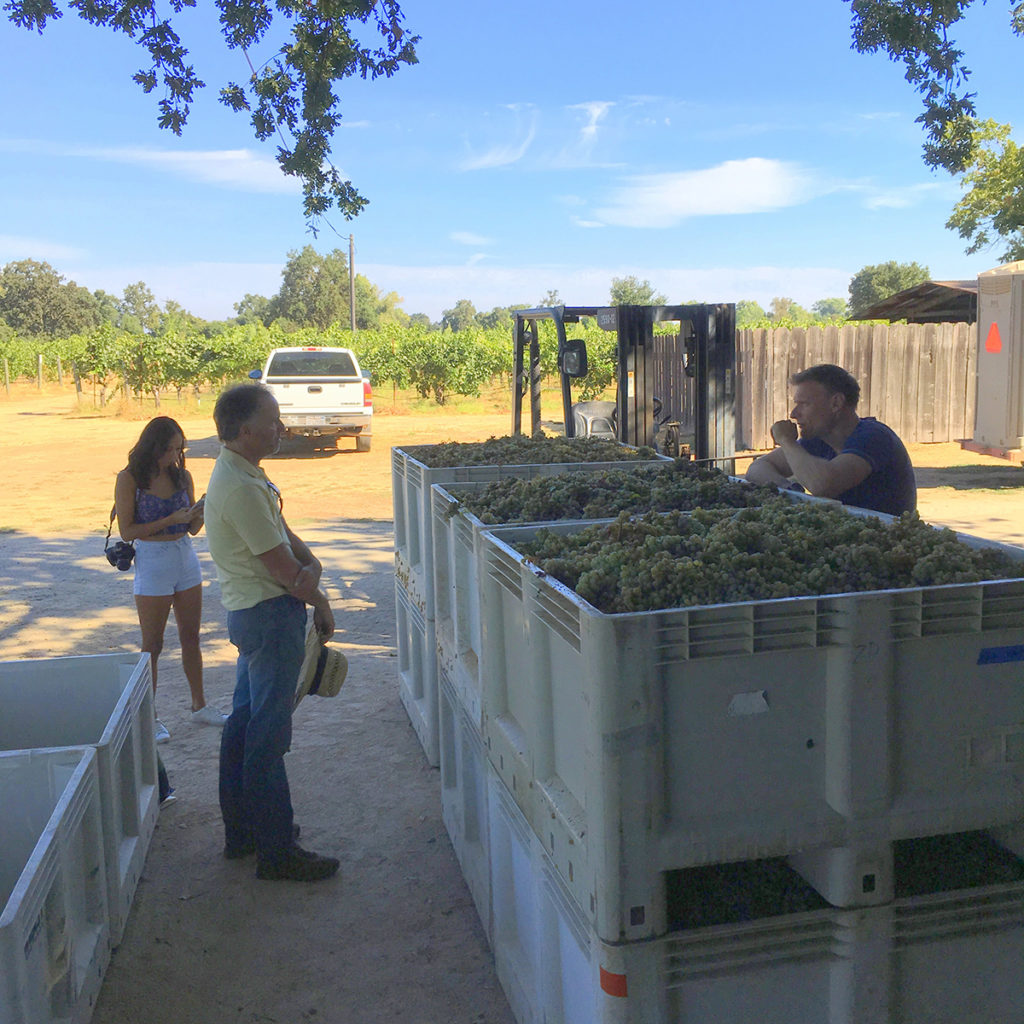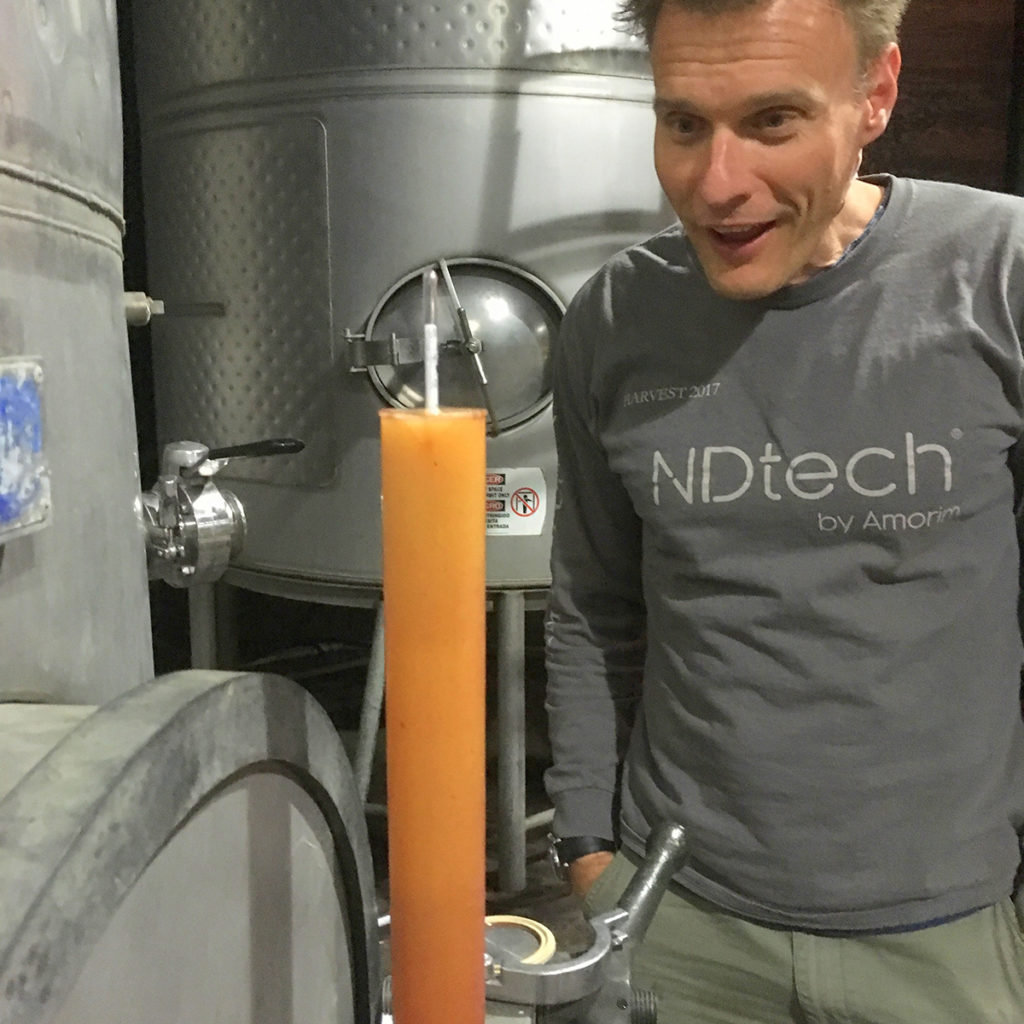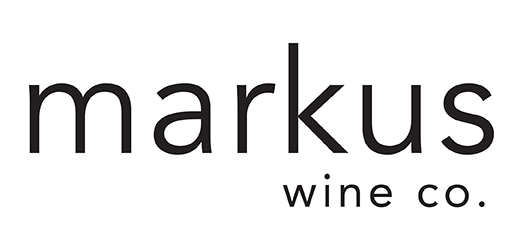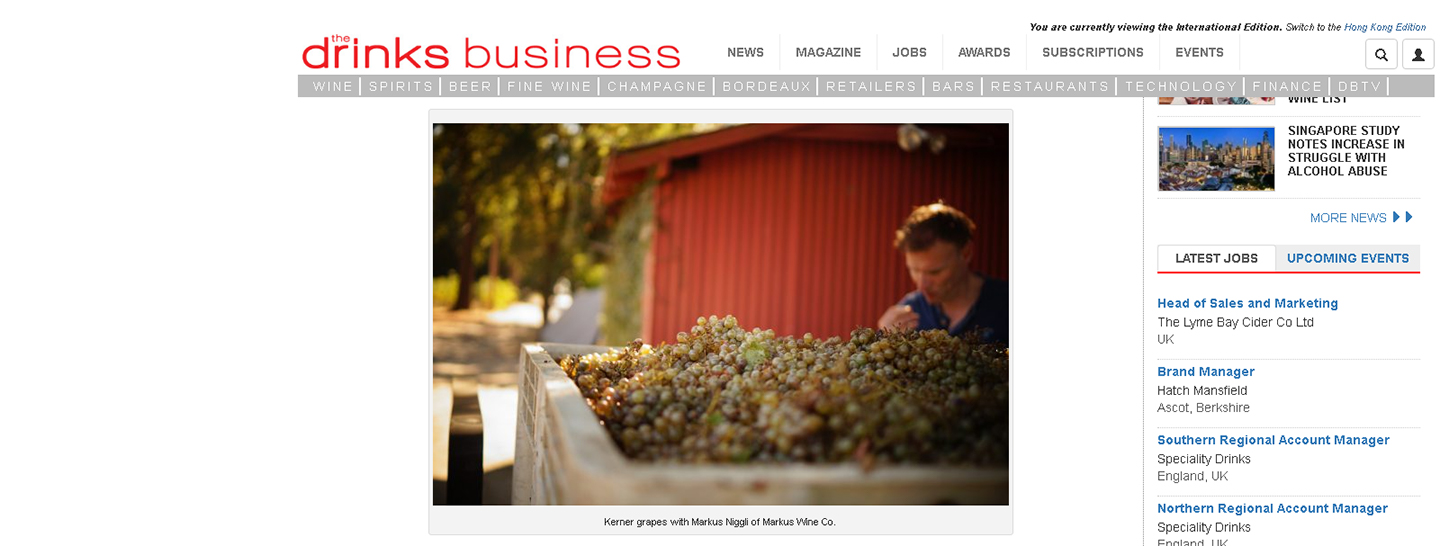Fresh from the industry’s respected TheDrinksBusiness.com:
“Wine educator Julie Albin takes a trip to Mokelumne Glen Vineyards in Lodi and reveals why German-Austrian grape varieties have ended up in the Californian region, and why it’s no longer typecast as offering only high alcohol Zinfandel.”
“I finally penned a story on one of my favorite vineyards in California for The Drinks Business. Many thanks to Brett Koth and Markus Wine Co. for offering insight to this wondrous place.” – Julie Albin

That’s Julie standing to the left of Brett, avidly taking copious and accurate notes during our September 8 field blend pick, that yielded 5.04 tons in total of 83% Kerner, 9% Bacchus and 8% Riesling.
You can read the very well-written piece at:
This excerpt illustrates how word is getting out about our achievements as a region:
“Customers have included artisan labels such as Forlorn Hope Wines, Markus Wine Co., LOCALISM, Sauvage Wines, Holman Cellars, Trail Marker Wine Company, Hatton Daniels, David Ramey’s Sidebar Cellars label, and more. In addition to an appreciation for German and Austrian varieties, a notable commonality of the wines from Mokelumne Glen Vineyards is their modest price range when compared to Napa and Sonoma. With retail prices ranging from $22 to $39, these boutique bottlings not only offer consumers an accessible alternative to classic varieties but also proves that one can no longer typecast Lodi as only high alcohol Zinfandel. In fact, red wines produced from this vineyard have as low as 11.3% alcohol. With freshness, elegance and complexity, these pioneering wines represent the exciting future that’s in store for Lodi wine country.”
And, by the way, the Kerner-Bacchus-Riesling Field Blend took it’s sweet time going through fermentation. Here’s Markus on October 23 getting prematurely excited about being done:

But it was not to be. The hydrometer slowly rose, indicating there was still more time required for the native yeasts to finish their work. Altogether, this aromatics-preserving, 55-degree F fermentation took a total of fifty days(!) to go dry. We have had long, cool fermentations before, but this tested our patience.
We get two bottlings out of this field blend. The first is Nativo, which is the pure expression of the vineyard. Here’s the back label that is at the printer now:

The second is Nimmo, which adds Gewürztraminer from Grand Island Vineyards near Clarksburg. We also put a kiss of two-year-old French oak on that blend, as well as stir the lees every ten days. The 2018 Nimmo will be 79% Kerner, 4% Bacchus, 3% Riesling with 14% Gewürztraminer, and will be bottled April 12, 2019.

